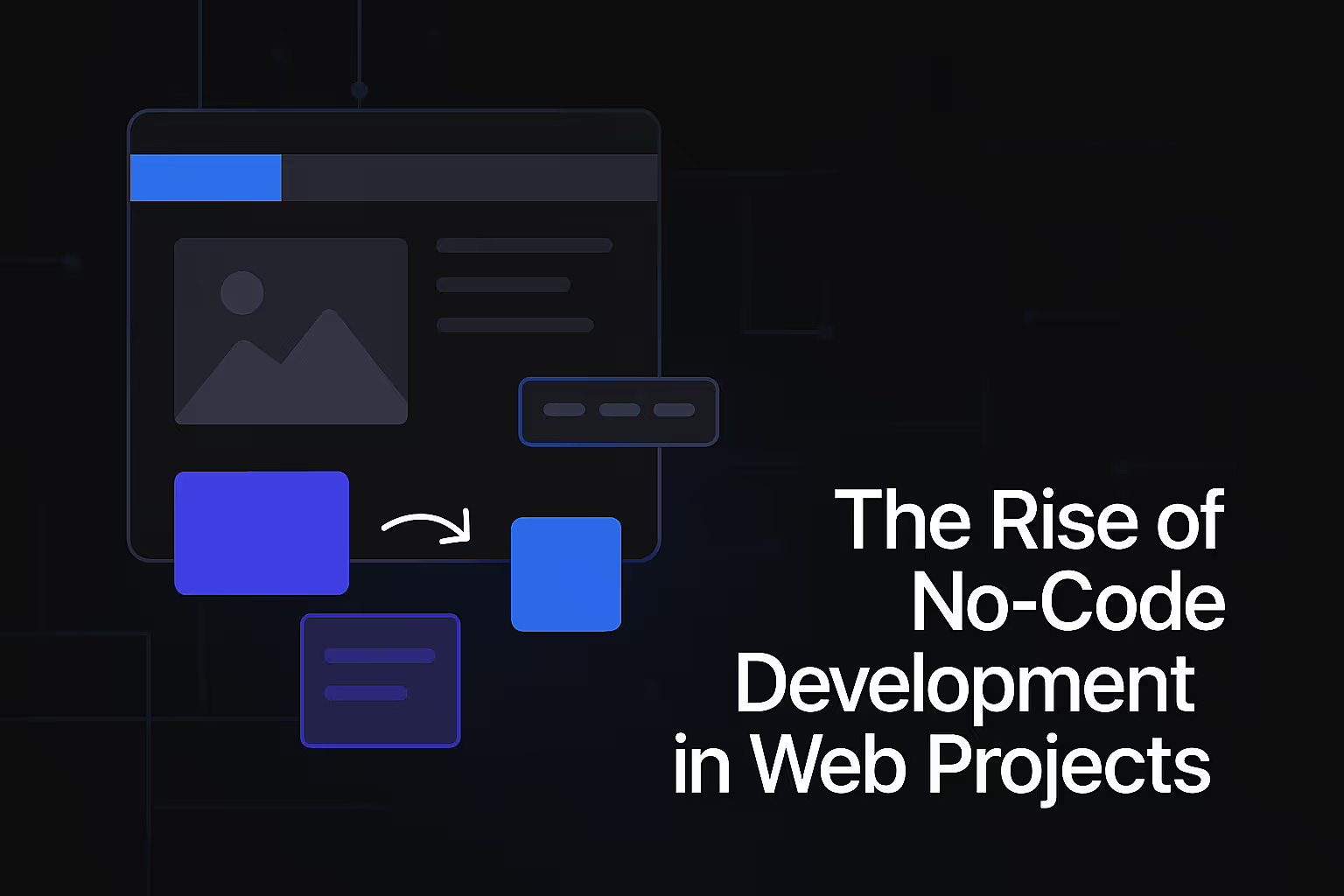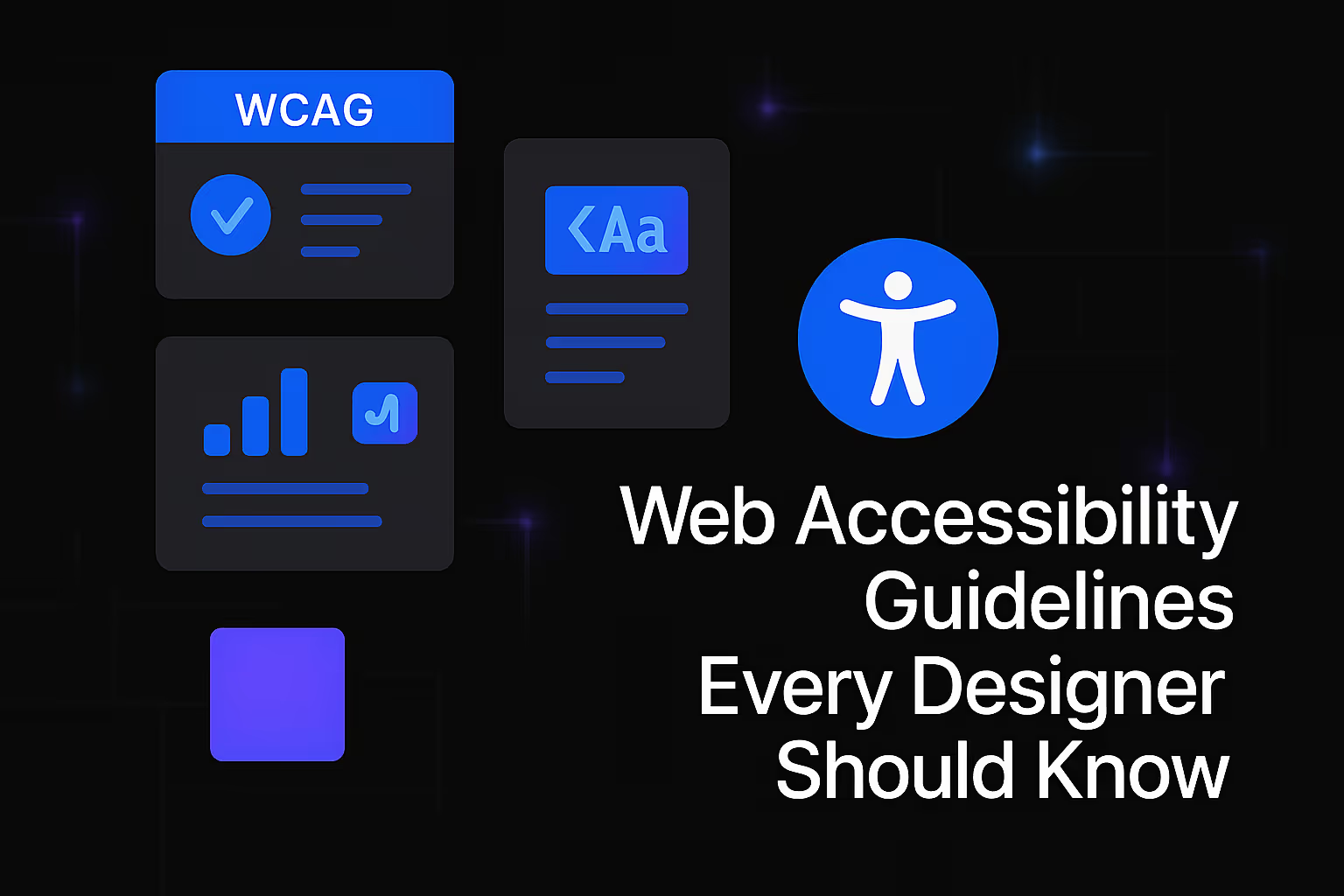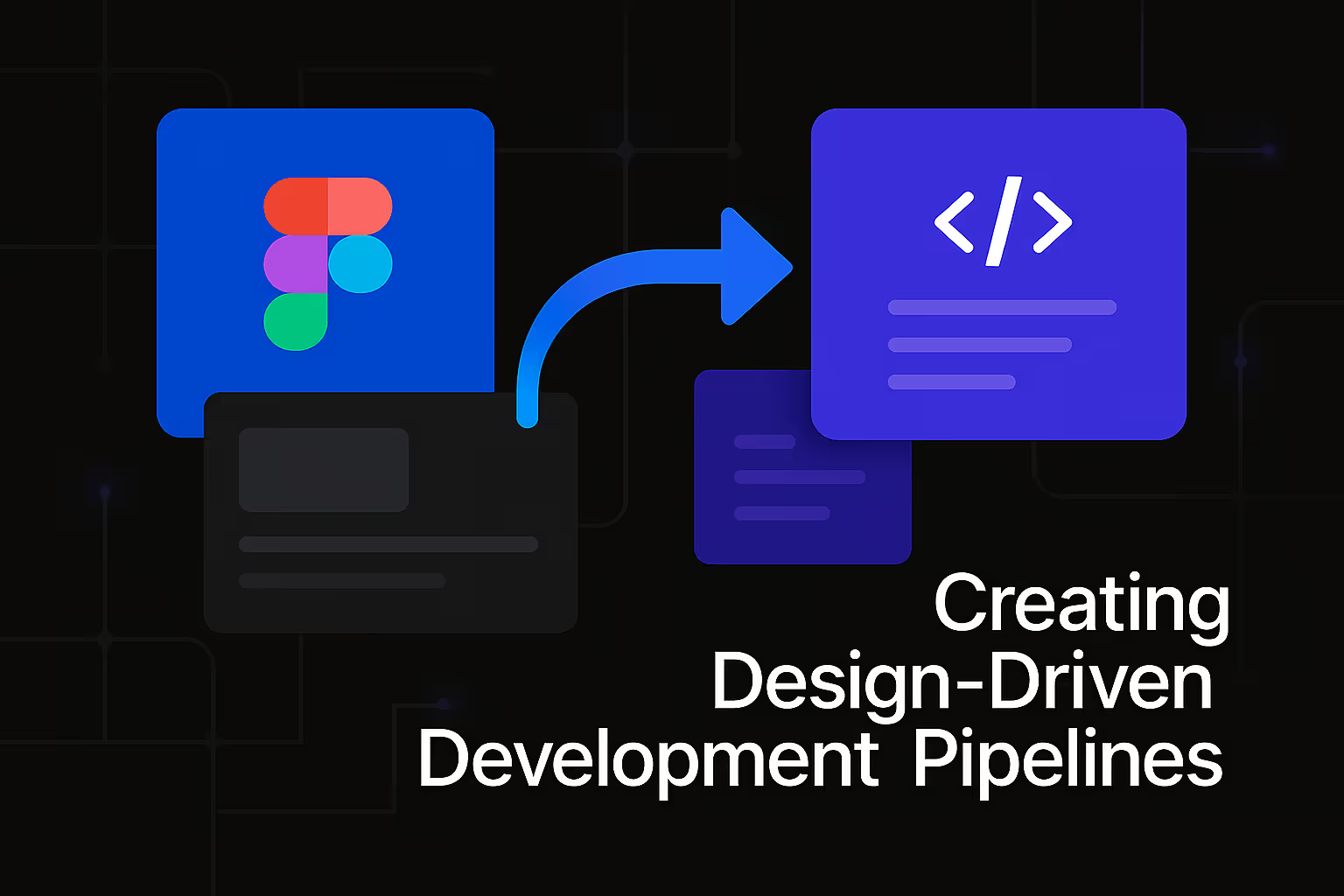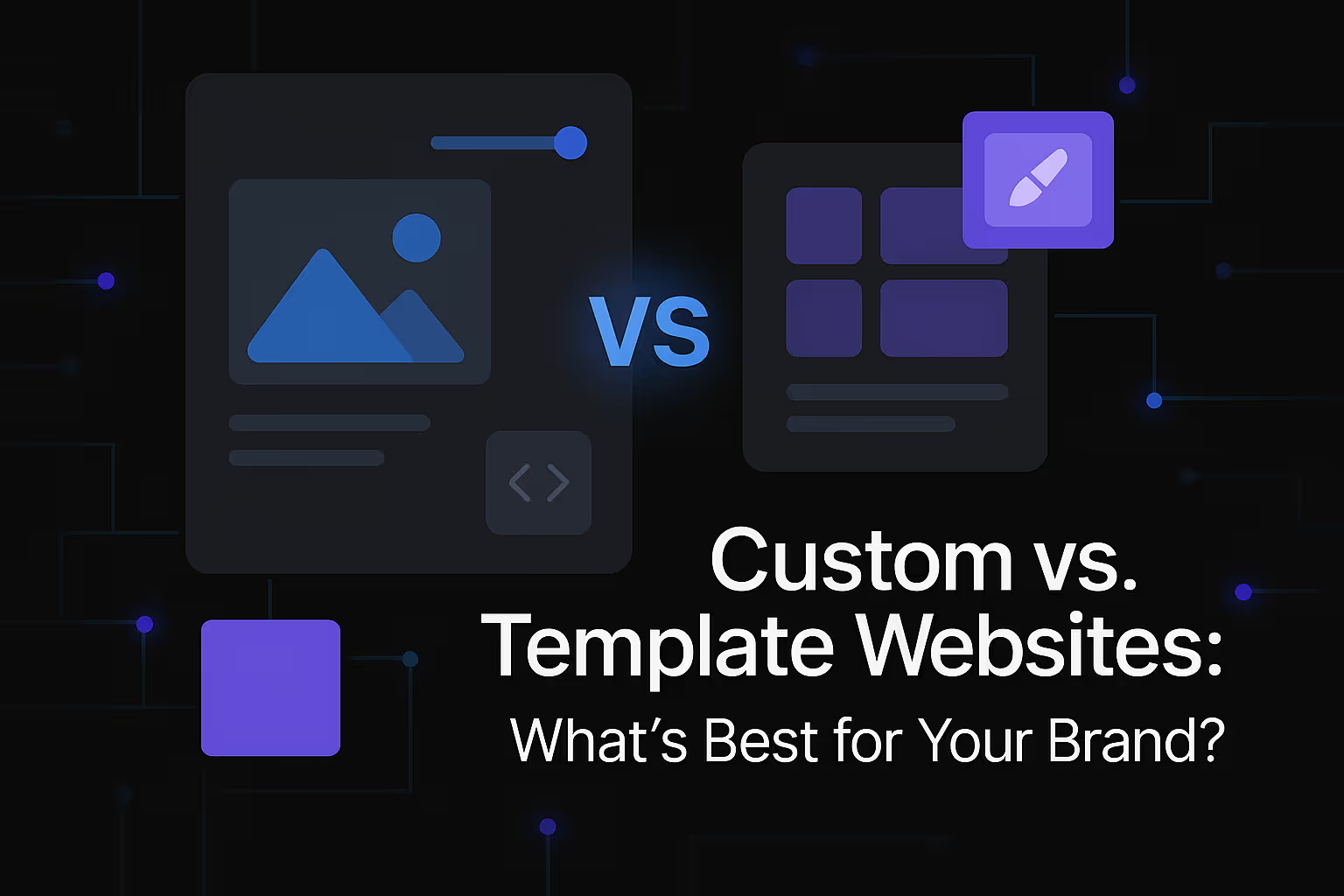The Rise of No-Code Development in Web Projects

In the dynamic landscape of digital innovation, a revolutionary force is reshaping how web projects come to life: no-code development. Once considered a niche solution or a tool for rudimentary tasks, no-code platforms have matured into sophisticated ecosystems, empowering individuals and organizations to build robust web applications and experiences without writing a single line of traditional code. This transformative shift is not merely a fleeting trend but a fundamental re-imagining of development paradigms, poised to drive unparalleled accessibility, speed, and efficiency across industries. The rise of no-code is democratizing digital creation, dismantling technical barriers, and fostering an environment where innovation can flourish at an unprecedented pace.
A Paradigm Shift: Redefining Web Creation Accessibility
The very foundation of web project creation is undergoing a profound metamorphosis. For decades, the ability to bring a web idea to fruition was almost exclusively the domain of trained developers, proficient in complex programming languages and intricate frameworks. This created a significant bottleneck for businesses and individuals alike, often leading to protracted development cycles, exorbitant costs, and a chasm between visionary concepts and their practical implementation. No-code development emerges as the bridge spanning this chasm, fundamentally altering who can build and what can be built.
From Code-Centric to User-Centric: The Evolution of Development
Historically, the journey from concept to live web project was a code-centric endeavor. It demanded a deep understanding of syntax, algorithms, and infrastructure, making it an inaccessible path for many. The underlying assumption was that digital creation required specialized, technical expertise. No-code platforms challenge this assumption by shifting the focus from the intricacies of code to the intuitive simplicity of visual interfaces. Users now interact with drag-and-drop elements, pre-built modules, and logical workflows, effectively translating their ideas into functional applications without ever confronting a line of Ruby, Python, or JavaScript. This fundamental shift renders the process inherently more user-centric, empowering a broader spectrum of individuals to become creators. It means that the bottleneck of specialized coding skills is alleviated, allowing ideas to be prototyped, tested, and launched with remarkable agility. The emphasis moves from how to build to what to build, enabling a clearer alignment with business objectives and user needs.
Democratizing Innovation: Who Benefits from No-Code?
The impact of no-code extends far beyond its technical capabilities; it is a powerful force for democratization. The benefits resonate across diverse groups, fostering an environment where innovation is no longer limited by coding proficiency. Entrepreneurs and startups can now validate ideas rapidly, launching minimum viable products (MVPs) in days or weeks, rather than months, significantly reducing time-to-market and initial investment. This agility allows them to pivot quickly based on market feedback, a critical advantage in competitive landscapes. Small and medium-sized businesses (SMBs) can leverage no-code to establish robust online presences, automate internal processes, and build customer portals without needing to hire an expensive in-house development team or outsource to costly agencies. This empowers them to compete more effectively with larger enterprises.
Furthermore, no-code empowers marketing teams to create bespoke landing pages, campaign microsites, and interactive experiences without constant reliance on IT departments, enabling them to execute campaigns with greater independence and speed. Even traditional developers find immense value in no-code, using it for rapid prototyping, building internal tools, or handling the front-end aspects of projects, freeing them to focus on complex custom integrations or backend logic. This collaborative synergy between citizen developers and professional coders amplifies overall productivity and innovation, demonstrating that no-code is not a replacement but an expansion of the development ecosystem. It fosters an environment where anyone with an idea, regardless of their technical background, can contribute meaningfully to the digital landscape.
The Core Advantages Fueling No-Code's Momentum
The pervasive adoption of no-code development is not accidental; it is driven by a compelling suite of advantages that address critical pain points in traditional web project execution. These benefits collectively make no-code an increasingly attractive and viable solution for a wide array of digital initiatives, from simple websites to complex business applications. Understanding these core advantages is key to appreciating the transformative power of this evolving paradigm.
Unprecedented Speed and Agility in Project Delivery
Perhaps the most immediately apparent benefit of no-code development is the sheer speed at which projects can be brought to fruition. Traditional coding cycles are inherently time-consuming, involving meticulous planning, extensive coding, debugging, and iterative testing. Each step requires specialized knowledge and can introduce delays. No-code platforms streamline this process dramatically by providing pre-built components, intuitive visual interfaces, and automated backend functionalities. This means that a web application that might take months to build with traditional coding can often be developed in weeks, or even days, using no-code tools. This rapid development capability translates directly into enhanced agility for businesses. The ability to quickly prototype, launch, and iterate on web projects allows organizations to respond swiftly to market changes, capitalize on emerging opportunities, and gather user feedback much earlier in the development lifecycle. This iterative approach fosters a continuous improvement loop, ensuring that the final product is closely aligned with user needs and business objectives, reducing the risk of developing solutions that are no longer relevant by the time they launch. The emphasis on speed significantly reduces the time-to-market, providing a critical competitive edge.
Significant Cost Reduction and Resource Optimization
The economic advantages of no-code development are substantial and contribute significantly to its growing popularity. Building web projects traditionally often entails considerable financial investment, primarily in hiring or contracting highly skilled developers whose expertise commands premium rates. Beyond salaries, there are costs associated with infrastructure, hosting, and ongoing maintenance. No-code platforms drastically reduce these expenses by minimizing the need for extensive coding expertise. Businesses can leverage existing non-technical staff, train them to use no-code tools, or simply reduce their reliance on external development resources. This internal empowerment optimizes human resources, allowing teams to accomplish more with less.
Furthermore, the simplified development process inherent in no-code also leads to reduced maintenance costs. Updates, bug fixes, and feature additions are often handled through the platform's intuitive interface, rather than requiring complex code modifications. This not only saves money but also frees up valuable time for technical teams, allowing them to focus on more strategic, complex, or innovative initiatives that genuinely require custom coding. The lower barrier to entry in terms of cost makes digital transformation accessible to a wider range of businesses, from startups with limited budgets to established enterprises seeking to optimize their development spend.
Empowering Citizen Developers: Bridging the Technical Divide
The concept of the "citizen developer" is central to the no-code revolution. These are individuals who possess deep domain knowledge within their respective business units but lack formal programming training. In a traditional development environment, their innovative ideas often remained conceptual due to the technical barrier. No-code platforms effectively bridge this technical divide, transforming these domain experts into active creators. Marketing managers can build their own landing pages, HR professionals can develop internal tools for onboarding, and small business owners can create e-commerce sites, all without writing a single line of code. This empowerment unlocks a vast reservoir of untapped creativity and problem-solving capabilities within organizations.
By enabling citizen developers, no-code fosters a more agile and responsive organizational structure. Decisions can be implemented faster, and solutions can be tailored precisely to immediate departmental needs, bypassing the often-long queues for IT resources. This self-sufficiency reduces dependence on centralized technical teams and accelerates the pace of internal innovation. It encourages a culture where solutions are born from those who directly experience the problems, leading to more practical, relevant, and effective digital tools. The proliferation of citizen developers is not merely about efficiency; it's about fundamentally reshaping how businesses approach problem-solving and digital product creation, fostering a truly collaborative and creative environment.
Enhanced Focus on Business Logic, Not Syntax
One of the most profound, yet often understated, advantages of no-code development is its ability to shift the focus from the minute details of programming syntax to the overarching business logic of a project. In traditional coding, a significant portion of a developer's time is dedicated to ensuring correct syntax, managing dependencies, configuring environments, and debugging code errors. While essential, these tasks often distract from the core objective: solving a business problem or delivering specific user value.
No-code platforms abstract away these technical complexities. Developers and citizen developers alike can concentrate on defining workflows, structuring data, designing user interfaces, and integrating third-party services, all through visual interfaces. This means that the creative energy and intellectual effort are directed squarely at understanding the user journey, optimizing conversion funnels, automating business processes, and delivering features that genuinely impact the bottom line. The conversation shifts from "how do we write this function?" to "how does this feature best serve our customers and business goals?" This reorientation ensures that development efforts are always aligned with strategic objectives, leading to more impactful and effective web projects. It allows for a greater emphasis on strategic thinking and less on tedious, repetitive coding tasks.
Navigating the Landscape: Considerations and Nuances
While the benefits of no-code development are compelling, a comprehensive understanding requires acknowledging its inherent considerations and potential limitations. Embracing no-code successfully means navigating these nuances with strategic foresight, ensuring that the chosen tools and approaches align perfectly with project requirements and long-term organizational goals. A balanced perspective is crucial for making informed decisions and maximizing the return on investment from no-code initiatives.
Understanding Limitations: Scalability, Customization, and Performance
Despite its significant advancements, no-code development is not a panacea, and it comes with certain limitations that must be carefully evaluated. One primary concern revolves around scalability. While many no-code platforms can handle a considerable user base and data volume, extremely high-traffic applications with complex, real-time data processing requirements might eventually hit performance ceilings or incur prohibitive costs on certain no-code infrastructures. Businesses with projections for massive, rapid growth need to thoroughly investigate a platform's scaling capabilities and pricing models.
Another key area is customization. While no-code excels at providing pre-built components and flexible templates, achieving highly unique or extremely specific functionalities that deviate significantly from a platform's native capabilities can be challenging or impossible without resorting to custom code integrations. This means that projects requiring bespoke algorithms, highly specialized third-party hardware interactions, or intricate graphical manipulations might find pure no-code solutions restrictive. Finally, performance can sometimes be a concern. Since no-code platforms generate code in the background, this generated code may not always be as optimized or lightweight as meticulously handcrafted code, potentially leading to slightly slower load times or less efficient resource utilization for very demanding applications. Understanding these inherent boundaries helps in making pragmatic decisions about when no-code is the optimal choice and when a hybrid or traditional coding approach might be more suitable.
The Importance of Platform Selection and Vendor Lock-in
The burgeoning no-code market offers a vast array of platforms, each with its unique strengths, features, and pricing structures. Making an informed platform selection is paramount to the success and longevity of any no-code project. Businesses must conduct thorough due diligence, evaluating platforms based on their specific needs concerning desired functionalities, integration capabilities, scalability requirements, and user interface intuitiveness. Considerations should include the learning curve for teams, the robustness of the platform's security measures, and the quality of its customer support and community.
A critical, long-term consideration is the risk of vendor lock-in. When building a complex application on a specific no-code platform, migrating that application to a different platform or extracting its underlying data and logic can be incredibly challenging, or even impossible, if the platform does not offer robust export features or API access. This creates a dependence on the chosen vendor for ongoing functionality, updates, and pricing. Businesses must carefully assess the portability of their data and the flexibility to integrate with external systems before committing to a particular platform. Understanding the platform's roadmap and its commitment to open standards or data export capabilities can mitigate this risk. A thorough evaluation process ensures that the chosen platform supports current needs and future growth without creating unforeseen dependencies.
Security and Data Governance in a No-Code Environment
In an era defined by data breaches and stringent privacy regulations, robust security and sound data governance are non-negotiable for any web project, including those built with no-code. While no-code platforms abstract away much of the underlying infrastructure, the responsibility for securing data remains a shared one between the platform provider and the user. Platform providers are typically responsible for the security of their core infrastructure, network, and the underlying code of their service. However, users are responsible for configuring their applications securely, managing user access permissions, implementing strong authentication practices, and ensuring that the data they input and process complies with relevant regulations such as GDPR, HIPAA, or CCPA.
It is imperative to scrutinize a no-code platform's security certifications, data encryption practices, compliance frameworks, and incident response protocols. Businesses must also understand where their data is hosted geographically and whether the platform offers granular control over data access and auditing. Moreover, if the no-code application integrates with other systems, the security of those integrations becomes critical. Best practices dictate a thorough security review, clear internal policies for data handling, and regular training for citizen developers on secure development practices within the no-code environment. Neglecting security and governance considerations can lead to significant financial penalties, reputational damage, and a loss of user trust. A proactive approach to these aspects is vital for maintaining the integrity and reliability of no-code web projects.
The Strategic Integration of No-Code in Modern Web Strategies
The emergence of no-code development is not about replacing traditional coding entirely; rather, it represents a powerful expansion of the developer toolkit and a strategic asset within modern web strategies. Its true value often lies in its ability to integrate seamlessly with existing processes and technologies, creating a more agile, efficient, and innovative ecosystem. Understanding how no-code can be strategically woven into broader digital initiatives is crucial for maximizing its impact and future-proofing web projects.
Hybrid Approaches: No-Code and Traditional Code Coexisting
One of the most effective strategies for leveraging no-code is through a hybrid approach, where no-code platforms and traditional coding methodologies coexist and complement each other. This acknowledges the strengths of both paradigms and applies them where they are most effective. For instance, a no-code platform might be used to rapidly build the front-end user interface and core workflows of a web application, handling data collection, user authentication, and basic business logic. Meanwhile, highly specialized or computationally intensive functionalities, complex integrations with legacy systems, or custom APIs might be developed using traditional code and then integrated into the no-code application.
This hybrid model allows organizations to harness the speed and accessibility of no-code for rapid prototyping and general functionality, while reserving the precision, flexibility, and performance of custom code for critical, unique components. It optimizes resource allocation by enabling citizen developers to handle the bulk of the application development, freeing up senior developers to focus on architectural challenges, complex algorithms, or custom solutions that genuinely require their expertise. This synergy accelerates overall project delivery, reduces development costs, and results in more robust, scalable, and adaptable web applications that leverage the best of both worlds. The lines between what is "no-code" and what is "code" are blurring, leading to more flexible and powerful development pipelines.
Future-Proofing Web Projects with Agile No-Code Pipelines
The digital landscape is in a constant state of flux, characterized by rapidly evolving user expectations, technological advancements, and competitive pressures. In this dynamic environment, the ability to adapt quickly is paramount for the long-term viability of any web project. No-code development inherently fosters an agile approach, making it an invaluable tool for future-proofing digital assets. The speed of iteration inherent in no-code platforms allows businesses to continuously test new features, gather user feedback, and deploy updates with remarkable efficiency. This continuous delivery model ensures that web projects remain relevant and performant over time.
Instead of lengthy development cycles that deliver a static product, no-code enables a pipeline of continuous improvement. If market demands shift, a new integration is required, or a feature needs to be retired, these changes can be implemented and deployed swiftly without extensive coding efforts. This agility minimizes the risk of technical debt and ensures that the web project can pivot and evolve in response to changing business needs or user behaviors. Furthermore, no-code platforms often handle underlying infrastructure updates and security patches, reducing the burden on internal teams and ensuring that the application remains on a secure and modern foundation. By embracing no-code, organizations build a resilient framework for their web presence, capable of adapting to the unforeseen challenges and opportunities of the future.
The Evolving Role of the Traditional Developer in a No-Code World
The rise of no-code development does not signal the obsolescence of traditional developers; rather, it heralds an evolution in their roles and responsibilities. Far from being replaced, skilled developers are finding their expertise redirected towards higher-value activities. In a no-code-infused environment, developers transition from being primary coders of every feature to becoming strategic architects, integrators, and problem-solvers. Their expertise becomes critical in selecting the right no-code platforms, defining architectural guidelines, ensuring robust security, and establishing data governance frameworks.
Many developers are now focusing on building custom extensions, APIs, or specialized modules that augment the capabilities of no-code platforms, enabling them to handle unique or complex requirements. They also play a crucial role in integrating no-code applications with existing enterprise systems, ensuring seamless data flow and process automation. Furthermore, experienced developers can act as mentors and consultants to citizen developers, guiding them in best practices, troubleshooting complex issues, and ensuring that no-code applications are built to scale and perform optimally. This shift allows developers to leverage their advanced problem-solving skills and strategic thinking, moving away from repetitive coding tasks and towards more impactful, innovative work. The no-code revolution elevates the developer's role, positioning them as essential enablers and strategists in the broader digital transformation journey.
The Road Ahead: What's Next for No-Code?
The journey of no-code development is far from over; it is a rapidly accelerating trajectory of innovation and expanding capabilities. As technology continues to advance and demand for digital solutions intensifies, no-code platforms are poised to become even more sophisticated, intelligent, and pervasive. The future promises deeper integrations, broader applicability, and an even more seamless experience for creators across all technical proficiencies. The evolution of no-code will continue to redefine the boundaries of digital creation, pushing the limits of what is possible without custom code.
AI and No-Code: A Symbiotic Evolution
The convergence of Artificial Intelligence (AI) and no-code development represents a powerful frontier for digital innovation. AI capabilities are already being integrated into no-code platforms, making them more intuitive, intelligent, and capable. Imagine platforms that can, for example, suggest optimal design layouts based on user input, automatically generate database schemas from natural language descriptions, or even self-optimize application performance based on real-time usage data. This symbiotic relationship will empower users to build more sophisticated and efficient applications with even less manual effort.
AI can also revolutionize the user experience within no-code environments, providing intelligent assistants that guide users through complex workflows, automate repetitive tasks, or even predict potential errors before they occur. Furthermore, no-code platforms could become the ideal interface for building AI-powered applications, abstracting away the complexities of machine learning models and allowing citizen developers to integrate AI functionalities like natural language processing, image recognition, or predictive analytics into their web projects without needing data science expertise. This convergence will dramatically amplify the power of no-code, opening up new avenues for innovation and allowing a broader audience to harness the transformative potential of AI.
Expanding Horizons: Beyond Websites to Complex Applications
While no-code initially gained traction for building simple websites and landing pages, its capabilities are rapidly expanding to encompass increasingly complex and specialized applications. The future will see no-code platforms routinely handling sophisticated enterprise resource planning (ERP) systems, intricate customer relationship management (CRM) solutions, bespoke internal tools for highly specific industries, and even robust mobile applications. This expansion is driven by advancements in platform architecture, more powerful integration capabilities, and a growing ecosystem of pre-built, industry-specific modules.
The ability of no-code to manage complex data models, integrate with diverse third-party APIs, and support advanced business logic is continually improving. This means that businesses will be able to tackle more ambitious digital transformation initiatives using no-code, reducing reliance on expensive custom development for even mission-critical applications. The lines between "simple" and "complex" will continue to blur, as no-code empowers users to build solutions that were once exclusively the domain of expert coders. This broadening scope will further solidify no-code's position as a fundamental pillar in the digital creation toolkit, capable of addressing a vast spectrum of organizational needs and driving innovation across all sectors.
The Imperative for Continuous Learning and Adaptation
The rapid evolution of technology, particularly in the no-code space, underscores the imperative for continuous learning and adaptation for individuals and organizations alike. The no-code landscape is dynamic, with new platforms emerging, existing platforms evolving, and best practices continually being refined. To maximize the benefits and stay competitive, users of no-code tools must commit to ongoing education, exploring new features, understanding emerging patterns, and adapting their development strategies.
For businesses, this means fostering a culture of experimentation and learning, encouraging teams to explore new no-code tools and methodologies. It involves investing in training for citizen developers and ensuring that technical teams remain current with the latest platform capabilities and integration strategies. The agility offered by no-code allows for rapid iteration, but this agility must be matched by a willingness to learn from outcomes, refine approaches, and proactively adjust to the changing digital environment. Those who embrace this philosophy of continuous learning and adaptation will be best positioned to harness the full power of no-code development, transforming their ideas into impactful web projects with unprecedented efficiency and innovation. The future belongs to those who are willing to build, learn, and adapt without hesitation.
Similar Insights
Stay Updated with Our Insights
Join our newsletter for the latest trends and tips in web development and digital marketing.




